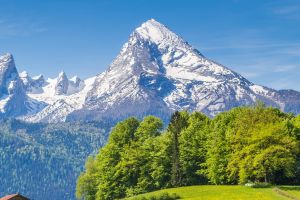On March 1, 1872, President Ulysses S. Grant signed the Act Establishing Yellowstone National Park, marking the birth of the world's first national park.
Since then, the concept of national parks has captivated the world, prompting countries to create their own protected areas. However, among the thousands of imitators, Yellowstone remains the unique originator and benchmark.
Yellowstone National Park continues to attract more than 3 million visitors each year from all corners of the globe. People come to witness the mesmerizing eruptions of the Old Faithful Geyser, explore the steamy Mammoth Hot Springs, and marvel at the countless bubbling mud pots.
While the park is stunning during the summer, visiting in the off-season offers the advantage of fewer crowds. Another way to find peace and tranquility is to venture away from the paved roads that crisscross the park.
Yellowstone boasts hundreds of miles of hiking trails that wind through the pristine Lamar Valley and along the rim of the magnificent Grand Canyon of Yellowstone. The further you explore, the greater the opportunities to spot the park's famous wildlife, including bison, elk, and bears.
Yellowstone National Park is a treasure trove of diverse landscapes and geological wonders. Nestled at the intersection of the Rocky Mountains and the North American plains, this national park boasts a wide range of terrains and geological features resulting from tectonic movements.
One of the most renowned attractions is the Grand Prismatic Spring, one of the largest hot springs globally, renowned for its vibrant pools of water.
Additionally, the park encompasses the awe-inspiring Grand Canyon, the expansive Yellowstone Lake, the iconic Old Faithful Geyser, the mystical Norris Geyser Basin, and the historic Roosevelt Arch, among many other captivating sights.
The park's wildlife resources are equally impressive. Yellowstone is home to a variety of mammals, such as bears, wolves, elk, deer, and caribou, as well as numerous species of birds and reptiles.
The natural environment here provides a conducive habitat for the survival and breeding of these magnificent creatures, allowing visitors to observe them up close in their natural habitats.
Situated in the eastern part of the Rocky Mountains, Yellowstone National Park spans the states of Wyoming, Montana, and Idaho. Encompassing an area of 22,000 square kilometers, 80% of the park remains wild and untouched by human activity.
Yellowstone's unique geographic location contributes to its diverse topography, ranging from alpine meadows to towering peaks. The park showcases numerous beautiful lakes and rivers, including the renowned Yellowstone Lake and the spectacular hot springs that dot the landscape.
Moreover, the park features the magnificent Grand Canyon, carved by the mighty Yellowstone River, stretching for 30 miles and plunging 1,200 feet deep. Visitors can relish the breathtaking vistas of the canyon and marvel at the stunning geological formations that adorn its walls.
Yellowstone National Park stands as a testament to the world's commitment to preserving and appreciating nature's wonders. Its establishment as the first national park has inspired the creation of protected areas worldwide.
With its captivating geothermal features, diverse wildlife, and majestic landscapes, Yellowstone offers a truly unforgettable experience for all who venture into its pristine wilderness.


